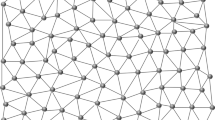Abstract
This chapter provides an overview of the materials contained later in this volume. I highlight major aspects of emotions and consider how they may be realized in a computational architecture. I consider issues related to primitive machineries, appraisal theories, primary and secondary emotions, and image-based thought processes. I discuss how emotional engines are incorporated into an intelligent system.
Access this chapter
Tax calculation will be finalised at checkout
Purchases are for personal use only
Preview
Unable to display preview. Download preview PDF.
Similar content being viewed by others
References
Goleman, D.: Emotional Intelligence: Why It Can Matter More Than IQ, Bantam (1995)
Goleman, D.: Social Intelligence: The New Science of Human Relationships. Bantam, NY (2006)
Bechara, A., Damasio, H., Damasio, A.R., Lee, G.P.: Different contributions of the human amygdala and ventromedial prefrontal cortex to decision-making. The Journal of Neuroscience 19(13), 5473–5481 (1999)
Damasio, A.R.: Descartes’ Error: Emotion, Reason, and the Human Brain. Gosset/Putnam Press (1994)
Ortony, A., Clore, G.L., Collins, A.: The Cognitive Structure of Emotions. Cambridge University Press, Cambridge (1988)
Pickard, W.R.: Affective Computing. The MIT Press, Cambridge (1997)
Breitenberg, V.: Vehicles: Experiments in Synthetic Psychology. MIT Press, Cambridge (1984)
Maes, P., Blumberg, B., Darrell, T., Pentland, A., Wexelblat, A.: Modeling Interactive Agents in ALIVE. IJCAI 1995, 2073–2074 (1995)
Bates, J.: The role of emotion in believable agents. Communications of ACM 37(7), 122–125 (1994)
Russell, J.A., Mehrabian, A.: Evidence for a three-factor theory of emotions. Journal of Research in Personality 11, 273–294 (1977)
Mehrabian, A.: Pleasure-arousal-dominance: a general framework for describing and measuring individual differences in temperament. Current Psychology: Developmental, Learning, Personality, Social 14(4), 261–292 (1996)
Becker, C., Kopp, S., Wachsmuth, I.: Why emotions should be integrated into conversational agents. In: Nishida, T. (ed.) Conversational Informatics: An Engineering Approach, pp. 49–68. Wiley, Chichester (2007)
Rizzolatti, G., Sinigaglia, C.: Mirrors in the Brain – How our minds share actions and emotions, translated by Anderson, F. Oxford University Press, Oxford (2008)
Baron-Cohen, S., Leslie, A.M., Frith, U.: Does the autistic child have a ’theory of mind’? Cognition, vol. 21, pp. 37–46 (1985)
Reeves, B., Nass, C.: The Media Equation: How People Treat Computers, Television, and New Media Like Real People and Places. Cambridge University Press, Cambridge (1996)
Nass, C., Steuer, J., Tauber, E.R.: Computers are social actors. In: Proceeding of the CHI Conference, pp. 72–77 (1994)
Lance, B., Marsella, S.C.: Emotionally Expressive Head and Body Movement During Gaze Shifts. In: Pelachaud, C., Martin, J.-C., André, E., Chollet, G., Karpouzis, K., Pelé, D. (eds.) IVA 2007. LNCS (LNAI), vol. 4722, pp. 72–85. Springer, Heidelberg (2007)
Hacker, B.A., Wankerl, T., Kiselev, A., Huang, H.H., Merckel, L., Okada, S., Schlichter, J., Abdikeev, N., Nishida, T.: Incorporating Intentional and Emotional Behaviors into a Virtual Human for Better Customer-Engineer-Interaction. In: Proc. 10th International Conference on Telecommunications (ConTEL 2009), Zagreb, Croatia, June 8-10, 2009, pp. 163–170. The University of Zagreb (2009)
Author information
Authors and Affiliations
Editor information
Editors and Affiliations
Rights and permissions
Copyright information
© 2010 Springer Berlin Heidelberg
About this chapter
Cite this chapter
Nishida, T. (2010). Modeling Machine Emotions for Realizing Intelligence – An Introduction –. In: Nishida, T., Jain, L.C., Faucher, C. (eds) Modeling Machine Emotions for Realizing Intelligence. Smart Innovation, Systems and Technologies, vol 1. Springer, Berlin, Heidelberg. https://doi.org/10.1007/978-3-642-12604-8_1
Download citation
DOI: https://doi.org/10.1007/978-3-642-12604-8_1
Publisher Name: Springer, Berlin, Heidelberg
Print ISBN: 978-3-642-12603-1
Online ISBN: 978-3-642-12604-8
eBook Packages: EngineeringEngineering (R0)




